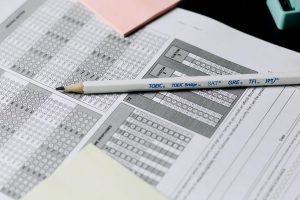Employment Credit Check Traps
Job applicants are sometimes asked to sign a release enabling a prospective employer to access their credit history at one or more credit reporting agencies. The employment credit check will not get the job applicant’s credit score. The employment credit check will get the highly personal information contained within the credit reports. This includes addresses, date of birth, last 4 digits of your social security number, account status, accounts in collection, inquiries by third parties, total indebtedness, reliability of payment history and the names of creditors. Repossession in your past? It will be there. Bankruptcy history including pending and older filings will be accessed through the Federal Public Access to Court Electronic Records (PACER) system.
Applicants don’t have to agree to submit to an employment credit check but that could cost them the job in most states. There is nothing to stop employers from using other unrelated and possibly flimsy or even illegal reasons not to hire you. The real reason for “don’t call us…we’ll call you” may be something uncovered during your employment credit check or simply by deducing that your refusal means you may have something to hide.
Read Employment Credit Check Release Carefully
What exactly are you consenting to if you sign the proposed background verification release? The releases vary greatly in their scope. Security sensitive jobs will require more detail regarding personal information that would be otherwise protected. If it’s a general, broad and sweeping release the job applicant opens himself up to investigation of many things that are not on his credit reports as well as those that are. A thorough employment credit check investigation will also separately check:
- Criminal records including County Criminal Felony and Misdemeanor records, Statewide criminal records for any given state, Federal records search.
- National Sex Offender Registry Search
- Global Sanctions and Enforcement Check identifying government databases of restricted, sanctioned and prohibited individuals.
- Prohibited Parties Check identifies individuals who are not allowed to do business in the U.S. or are deemed to be a threat by the federal government.
- Child Abuse and Adult Abuse Registries
There are various levels of detailed Education verification. Professional license and Employment verification as well as Military Records will be searched in detail. Motor Vehicle records can contain all kinds of revealing information including restrictions, violations, suspensions and revocations. There are drug and alcohol history databases that can be accessed.
Employment Credit Check Banned or Limited in 11 States
If you live in one of the following states you enjoy the benefits of laws that ban or limit the use of employment credit checks. Most states also have “ban the box” laws that forbid scrutiny of criminal records at least until after the first interview. You need to check the exact wording of the applicable laws in your state if you intend to rely on them. The states that ban or limit employment credit checks are:
- California
- Colorado
- Connecticut
- Delaware
- Hawaii
- Illinois
- Maryland
- Nevada
- Oregon
- Vermont
- Washington
Drug, Alcohol and Health Screening
An employment credit check will include drug and alcohol screening for many applicants. Alcohol testing may consist of methods such as breath, saliva tests and blood tests. Hiring requirements may include tests using a DOT approved device such as the breathalyzer. The compliance requirements may include testing for post-accident, random(forbidden without probable cause in some states), reasonable suspicion as well as follow up and return-to-duty testing. Applicants may need to fill out the DOT Alcohol Testing Form to help determine potential alcohol use.
Medical Suitability may be determined through use of narrowly tailored medical questionnaires. These will be questions specifically and directly aimed as they relate to qualifications for the position sought. There may be a sleep study requirement.
Drug Testing
Drug Testing can assume many forms. We will examine the most common forms of drug testing. We will dispel some myths as we discuss each one. The legalization of marijuana in many states while it remains forbidden under federal law makes for some interesting dilemmas with that drug. The use of medical marijuana may be protected in some states.
The use of hair sample drug testing is becoming increasingly common. There are some issues with hair sample drug testing that are not well known to the general public. We will explore hair sample drug testing techniques and issues in depth.
Drugs that may be tested for during hair sample testing include: amphetamines, cocaine, opiates, extended opiates like oxycodone, hydrocodone and hydromorphone, PCP and marijuana. Depending on the laboratory additional drugs are also available for testing. These additional drugs include fentanyl, benzodiazepines, barbiturates, methadone, propoxyphene, meperidine, tramadol, ketamine, buprenorphine, zolpidem, synthetic cannabinoids, alcohol metabolite-ethyl glucuronide (EIG)
Attempting to cheat the drug testing process through dubious pills and liquids has become a big business. The effectiveness of any particular technique of masking the presence of drugs has no science to back it up. If claims on products that promise clean check ups are going to be believed and relied upon I would say that the user is on very perilous ground. Passing of time is the only proven cure.
It is often said that marijuana can stay in the blood stream for 30 or more days. This is accurate for heavy, daily users. For someone who just likes an occasional toke or 2 on weekends the range of safety is at least 2 weeks of total abstinence…preferably longer to be 100% safe. Everyone’s metabolism is different so it is impossible to do more than generalize. Cocaine, heroin, barbiturates and most other drugs have left the system of the user completely without a trace usually after a week or so. The fact that harder drugs disappear more quickly is an oddity of chemistry that doesn’t seem like it should be true but it is true. Poppy seeds from bakery products can occasionally cause false positive reading for opiates. Before the applicant gets complacent however they should remember that the drug testers have a big trap waiting for those who think they are getting away with something.. It’s called drug hair testing.
Drug Hair Testing
The use of drug hair testing by employers keeps growing because drug hair testing is so accurate, complete and reveals drug use over an extended period of time. You have probably heard about this process but the details are not well known. Many myths prevail. These are the facts:
- Hair drug testing is nearly impossible to cheat
- Provides up to a 90 day drug history for most drugs
- 5-10 times as many drug users identified using hair
- Non-intrusive collection process
- Drug takes 4-10 days from time of ingestion to show in hair
- Typical hair sample is one + 1/2 inches in length
- Each 1/2 inch represents 30 days
- If not enough hair on head body hair will do (don’t ask)
- 36-48 hour turnaround time on negative results
- Confirmation tests will be performed on non negative results
- Hair coloring products, detox shampoos, hair care products and second hand smoke have no effect
These tests can be used for pre-employment, return-to-duty, follow up and random testing. Drug hair testing will be used by employers with drug free workplaces, companies employing safety sensitive workers, companies interested in deterring drug users from applying in the first place or companies interested in reducing drug use among current employees.




